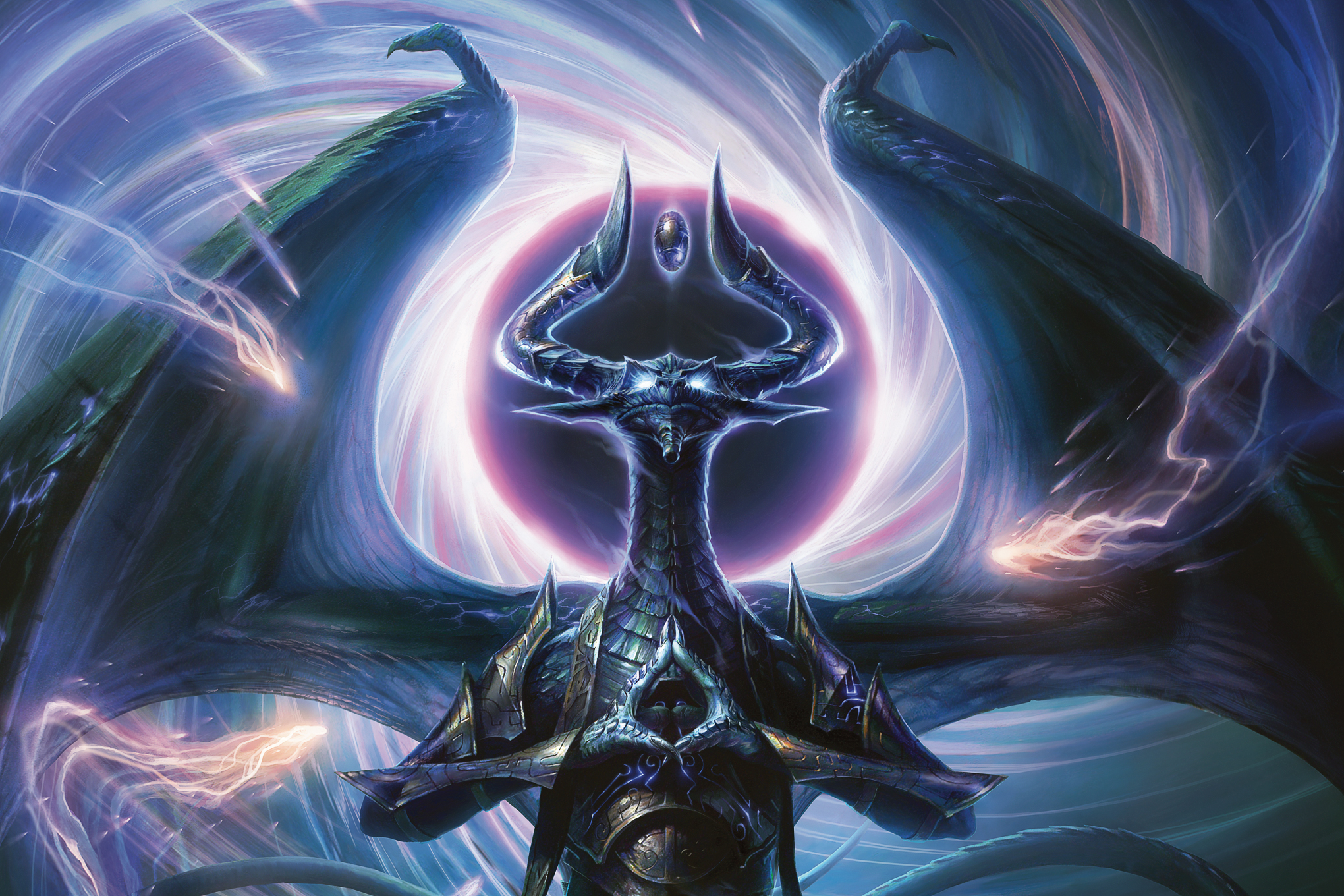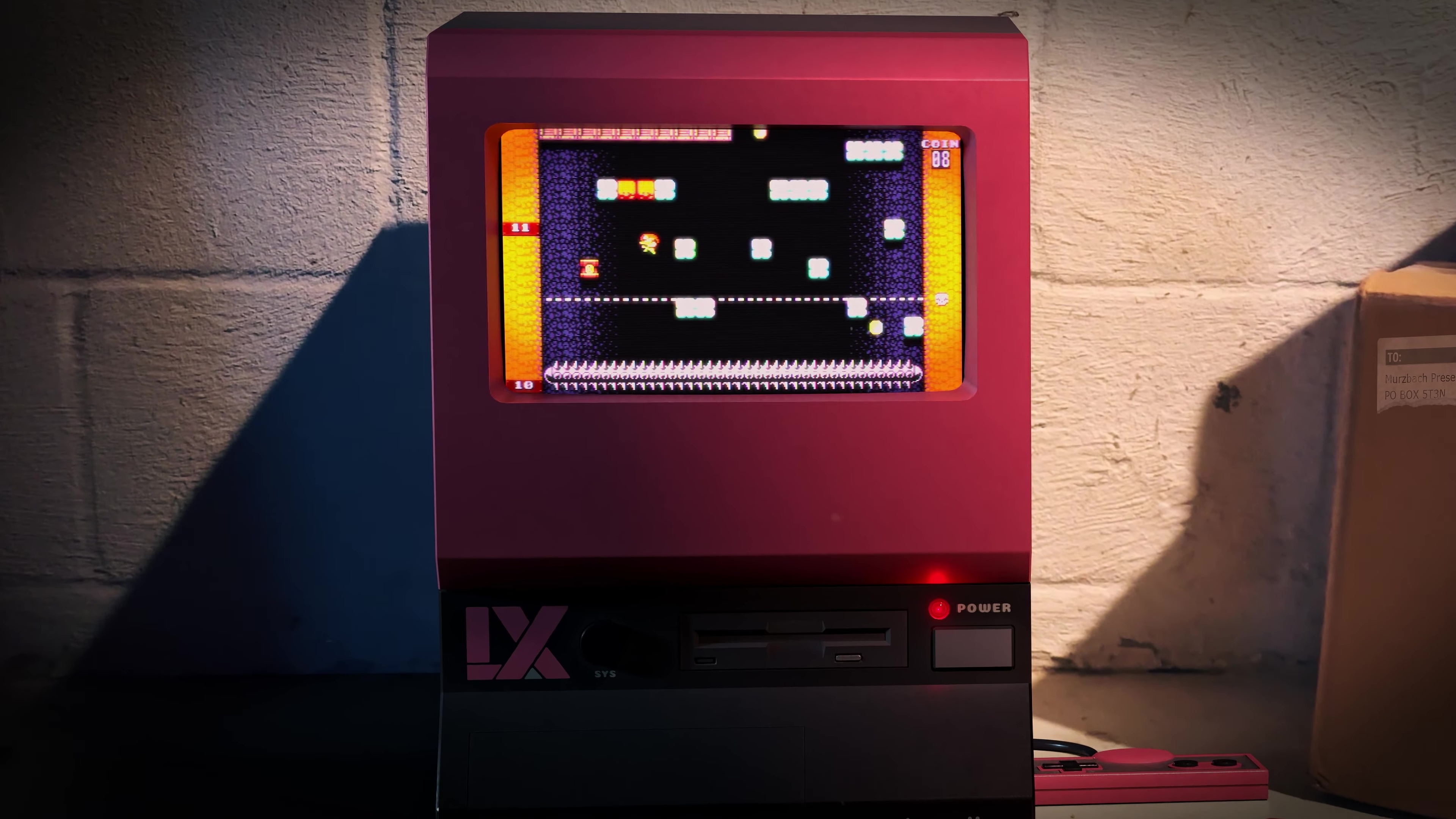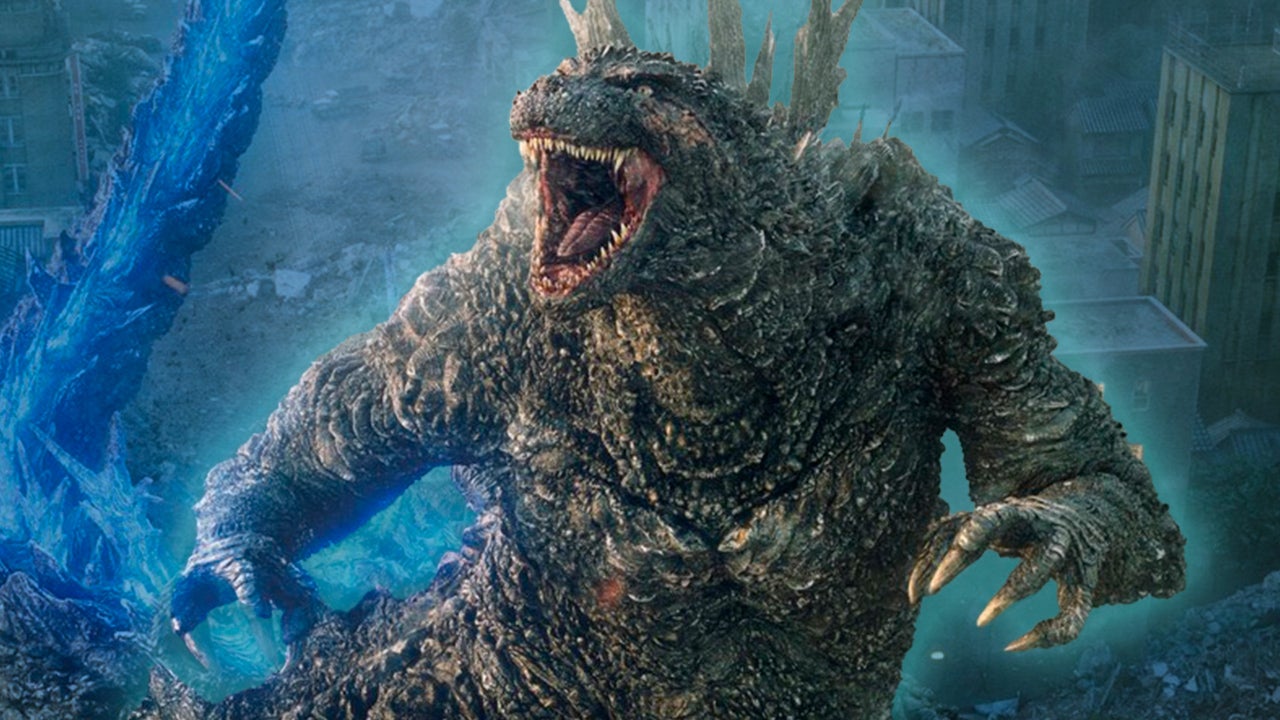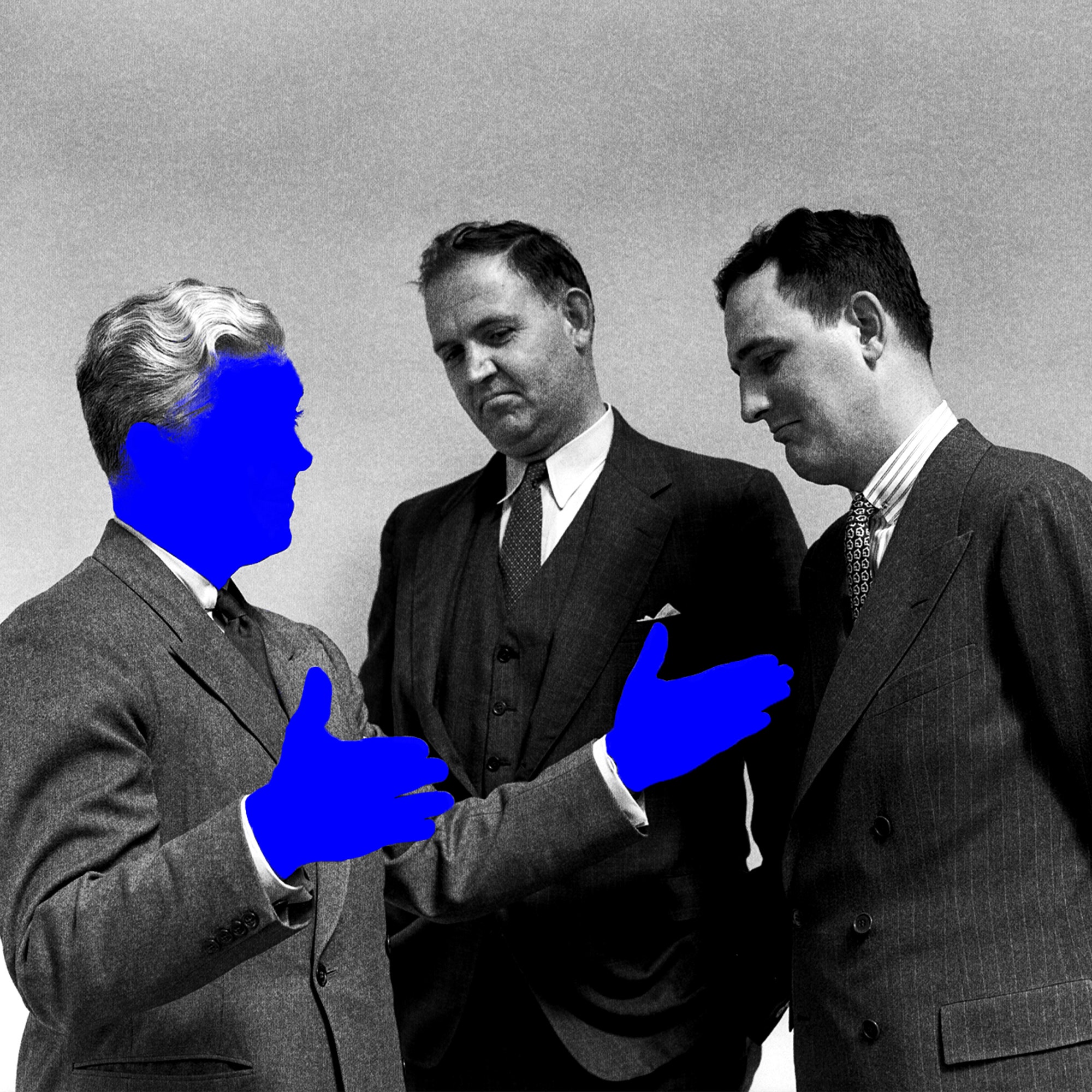
By the end of next year, Marvel’s Spider-Man and Final Fantasy’s Cloud Strife will finally meet on the battlefield. No, this isn’t a teaser from a Super Smash Bros. trailer or a breaking deal on a pair of Fortnite skins. Rather, this is what a competitive Magic: The Gathering tournament will look like in the very near future. And it’s all because of something called Universes Beyond, which will have increased prominence in the trading card game starting in 2025.
It might seem trivial to outside observers, but in truth the rise of Universes Beyond marks the biggest change to the legendary trading card game in a generation. Here’s how it all went down, and what it means for the future of Magic.

Traditionally, Wizards of the Coast has always told its own stories inside the Magic Multiverse. It’s a capability that the publisher has touted for decades now, an evolving world-building machine manned by freelance artists, internal game designers, and all-seeing art directors that all worked together to grind out multiple new fantasy worlds every year. It was settings like Magic’s home realm of Dominaria or the bustling endless city of Ravnica that propelled multigenerational and intertwined stories of now beloved characters such as the hot-headed pyromancer Chandra or the scheming dragon tyrant Nicol Bolas. Each new set propelled these worlds’ characters and conflicts from one generation to the next.
Beginning in 2017, that world-building began to take more prominence within Wizards. First came the War of the Spark storyline, an epic battle between the forces of good and evil that played out across multiple sets of cards and even a massive hardcover novel. They even killed off a major character, Gideon Jura, to get fans’ attention. Around the same time, Wizards and Netflix announced a Magic television show, led by directors Anthony and Joe Russo shortly after their massive success directing the Avengers: Infinity War and Endgame films.
But by 2020, Magic had also started dipping its toes into partnerships with new IPs, beginning with a small release of special edition cards featuring characters from the Walking Dead television show. This was the start of a project that would become Universes Beyond, one that at least initially encompassed occasional small releases featuring characters from a variety of other properties, including Godzilla, Stranger Things, Street Fighter, and so on.
Things escalated significantly in late 2023 with the arrival of The Lord of the Rings: Tales of Middle-earth, based on J.R.R. Tolkien’s series. That Universes Beyond set reportedly generated twice as much revenue for Hasbro as any other Magic set to date, easily becoming the company’s most successful Magic product launch of the year. Looking back, it’s almost as if Hasbro had been doing A/B testing, comparing the performance at retail of the Magic Multiverse and Universes Beyond. In early 2024, CEO Chris Cocks made clear who had won, calling for two Lord of the Rings-worthy sets of cards every year.

What’s interesting is how they decided to inject more Universes Beyond into the game’s ecosystem, a decision that impacts not only the output of the traditional Magic Multiverse but also the expectations that Wizards of the Coast previously set with fans of the core game.
Player concerns over the impact of Universes Beyond can be traced back to that first Walking Dead Secret Lair, but questions about the impact of other IP tie-ins on Magic’s own world-building and competitive integrity were met with assurances that IP crossovers were simply an exercise in expanding the Magic game system to let players “explore worlds outside the worlds of Magic.”
In a 2021 article providing more details about Magic’s Universes Beyond project, the company then stated, “Universes Beyond cards will not be Standard legal. We strive to make Magic cards that are widely useful, but Universes Beyond will be above and, well, beyond our normal Standard releases.”
And up to now, most of the prior Universes Beyond products were relegated to the casual, less sanctioned environment of Commander, Magic’s flagship multiplayer format. Some releases only offered a handful of cards, limited-time special edition products called Secret Lairs. Others were a bit bigger, including tie-ins with Doctor Who, Warhammer 40,000, and Fallout that were released through preconstructed Commander decks that introduced brand-new cards designed to blend the individual properties’ unique themes and characters with Magic rules and mechanics.
This approach allowed less interested players to disengage with Universes Beyond since Magic’s own worlds, themes, characters, and stories remained the principal backdrop on most product releases, and all Standard releases that served as the primary funnel for competition-oriented cards.

Ultimately, players’ expectations fell victim to the game’s own success when, on Oct. 25, during a panel event at Magic’s 2024 World Championship in Las Vegas, Wizards’ vice president of game design, Aaron Forsythe, announced a fundamental change in the format legality of upcoming Universes Beyond sets.
“We have a bunch of really cool stuff coming up in 2025. […] In order to just simplify how those work in relativity to the rest of Magic, we are saying all these future Universes Beyond sets, when they come out, they’re going to be legal in every constructed format we offer,” Forsythe told the room. “Standard, Pioneer, Modern. We have been designing these sets with this goal in mind.
“We know Universes Beyond does an awesome job of bringing new fans to Magic, which is a lot of the goal of doing it in the first place,” he added. “So when they get here, we would like to kind of ease them into our competitive settings.”
It’s hard not to see the success of Tales of Middle-earth as the final confirmation of what was likely an emerging experiment at Wizards. Sure, maybe some of that set’s success was due in part to hype around a uniquely rare edition of the set’s biggest chase card, The One Ring. But it’s just as important to recognize that the set was designed for an existing competitive format, Modern. As a result, not only did the set appeal to the typical base of casual players and LOTR fans who wanted to see Tolkien’s stories depicted on Magic cards, but now competitors keeping up with changes to the Modern format also had to acquire cards from the set in order to participate in an evolving metagame.
This turned out to be a double-edged sword for Wizards and how it planned to retain players who discover the game because of a preexisting fandom with a Universes Beyond property. Those who wanted to play competitive Magic after getting hooked by something they liked in Tales of Middle-earth had to participate in Modern, a particularly advanced and complex, not to mention expensive, format to play in.

“Dumping someone who is a Lord of the Rings fan straight into competitive Modern was a bit of a stretch,” Forsythe explained during the Las Vegas panel. “The smaller constructed formats, Standard and Pioneer, where your deck that is built out of these cool cards that you just got of your favorite Universes Beyond IP has a reasonable chance of being competitive.”
Along with the news that future Universes Beyond sets are entering Standard, also came the announcement that there would be more Universes Beyond sets, at least through 2025.
“The calendar for next year is half Magic Multiverse sets and half Universes Beyond sets,” Forsythe said. “We have a lot of cool partners lined up… and we want to balance that against our own Magic storytelling.”
Although no announcements have been made about the product roadmap for 2026 or later, the Las Vegas panel did confirm that next year’s product lineup included six Standard sets, three of which will be Universes Beyond products. As of now, two of those three are public, starting with a Final Fantasy set in June, a date-pending Spider-Man set, and a third, yet unnamed tie-in to be released at the end of the year.
The response from Magic’s audience across social media was mixed at best.
“After thinking about the various announcements, I really don’t mind UB cards being legal everywhere – that totally makes sense and is much less confusing,” Magic Hall of Famer Luis Scott-Vargas posted on X. “That said, I can’t say I’m a fan of just how much UB we are in for, and how many sets overall are coming down the pipeline.”
Among the critics of the Universes Beyond announcement is Sam Gaglio, a self-described Magic historian who produces the Rhystic Studies YouTube channel, which features lengthy video essays that explore the game’s art and cultural impact.
In a Substack article he posted the day after the news broke, Gaglio openly challenges the very notion that adding Universes Beyond to formats will help retain fans of other IPs in Magic’s competitive ecosystem — and raises the equally important question of how these changes will impact the game’s current player base.
“If the goal is to invite more people into Magic, then what do you do once they’re here? How do you separate your own signals from your own noise?” he wrote. “What happens when that Lord of the Rings fan is ambushed by Captain America and Wolverine in the next fiscal year?”
He added, “How do you address, in earnest, the good ole fashioned Liliana fans who have never heard of any of these characters? How many more times must you qualify Magic to the people who built and funded the empire you’ve put up for sale?”
Obviously, Magic representatives haven’t made a point-by-point response to Gaglio’s article, and they likely won’t. However, Magic’s lead designer, Mark Rosewater, who was on the panel that included the Universes Beyond announcement, had a busy weekend addressing players’ concerns on his personal Q&A blog.
“I know it’s easy to want to attribute malice to a company’s decisions, but we really are trying to do what we feel is best for the longterm health of the game,” Rosewater wrote in response to a comment that the news felt like a “cynical money grab.”
In another post, responding to concerns that the rate of Universes Beyond in 2025 felt like too much, Rosewater indicated that the 2025 release cadence wasn’t necessarily a permanent adoption.
“This cadence is not forever. It’s for now,” he wrote.
For fans of Magic’s original story and world-building — a narrative built on more than 30 years of characters, conflicts, and interdimensional landscapes — the timing of the Universes Beyond announcement feels a bit perplexing when Magic’s own cultural penetration is going to be tested with an upcoming series on Netflix — albeit one that appears to be significantly altered in scope and scale from its original Russo-brothers-led format.
The development of the Netflix show has been its own story of turmoil and shifting plans, but its production was confirmed yet again at the start of the very same panel that eventually led to the Universes Beyond news. To kick off what turned out to be a game-defining panel, Terry Matalas, the showrunner for the upcoming Netflix series, walked on stage and shared some behind-the-scenes details from the show.
“This cadence is not forever. It’s for now”
Mark Rosewater
“Before we wrote word one of a script, we got in a room with my writers… and we immersed ourselves for 10 weeks with every card, every deck, every art book,” Matalas said. “Magic is your way into any kind of story you want to tell. Fantasy, science fiction, romance, thriller, horror. It’s so cool to be able to be in this sandbox, but then come at it through these amazing characters who have already been established in canon.”
Until last week, this would have been fantastic news for the countless players who’ve spent the last 30 years imagining what it might be like if the world of Magic came to life. But as Wizards of the Coast risks diluting its own brand with a bevy of tie-ins to other established characters, stories, and worlds, will there be enough source material for another Magic series 30 years from now? Or will Magic lean even further into the allure of its most successful Universes Beyond collaborations?
Source:https://www.polygon.com/mtg-magic-the-gathering/472487/universes-beyond-controversy-standard-legal-magic-multiverse







